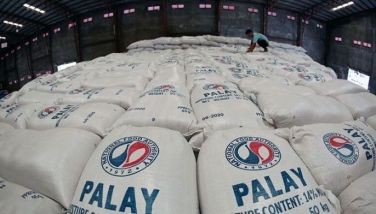Global economic progress seen by 2050
August 23, 2002 | 12:00am
WASHINGTON – The global economy could increase by four times in the next 50 years if governments act now to avert severe environmental damage and social unrest, a new World Bank report said. Poverty could also be reduced significantly.
Within five decades the world could have a gross domestic product of $140 trillion and a total population of nine billion people, up from six billion today, according to the bank’s World Development Report 2003 released on Wednesday.
The World Bank has urged participants at the World Summit on Sustainable Development in Johannesburg from Aug. 26 to Sept. 4 to agree on steps that can be taken now to ensure that growth does not come at great cost to future generations. The burden for development must be shared more widely, the report said.
Rich countries must open their markets more and cut agricultural subsidies that depress incomes of third world farmers. They must also increase the flow of aid, medicines, and new technologies to developing countries.
Governments in developing countries, in turn, must become more accountable and transparent, and ensure that poor people are able to obtain secure land tenure, as well as access to education, health care, and other basic services.
"Low income countries will need to grow at 3.6 percent per capita to meet the United Nations’ Millennium Development Goal of halving poverty by 2015, but this growth must be achieved in a manner that preserves our future," said Ian Johnson, vice president of the World Bank’s Environmentally and Socially Sustainable Development Network.
"It would be reckless of us to successfully reach the Millennium Development Goals in 2015, only to be confronted by dysfunctional cities, dwindling water supplies, more inequality and conflict, and even less cropland to sustain us than we have now."
The challenges are daunting, the World Bank said. The average income in the richest 20 countries is already 37 times that in the poorest 20 nations. Globally, 1.3 billion people live on fragile lands – arid zones, slopes, wetlands, and forests – that cannot sustain them.
Population pressure on arable land in Asia is considerable – and growing. Severe land degradation affects some 35 percent of productive land. The result has been to put more population pressure on the Inner Asian drylands.
The issue of fragile lands is especially critical for Asia, as East and South Asia have the most people on fragile land. Many of the ways of expanding agricultural production in the drylands – shifting cultivation to other areas, reducing fallow periods, switching farming practices, overgrazing pasture areas, cutting trees for fuel wood – result in great environmental degradation.
Since the 1950s, nearly two million hectares of land worldwide – representing 23 percent of all cropland, pastures, forest, and woodland – have been degraded, and tropical forests are disappearing at the rate of five percent per decade, the report added.
Within five decades the world could have a gross domestic product of $140 trillion and a total population of nine billion people, up from six billion today, according to the bank’s World Development Report 2003 released on Wednesday.
The World Bank has urged participants at the World Summit on Sustainable Development in Johannesburg from Aug. 26 to Sept. 4 to agree on steps that can be taken now to ensure that growth does not come at great cost to future generations. The burden for development must be shared more widely, the report said.
Rich countries must open their markets more and cut agricultural subsidies that depress incomes of third world farmers. They must also increase the flow of aid, medicines, and new technologies to developing countries.
Governments in developing countries, in turn, must become more accountable and transparent, and ensure that poor people are able to obtain secure land tenure, as well as access to education, health care, and other basic services.
"Low income countries will need to grow at 3.6 percent per capita to meet the United Nations’ Millennium Development Goal of halving poverty by 2015, but this growth must be achieved in a manner that preserves our future," said Ian Johnson, vice president of the World Bank’s Environmentally and Socially Sustainable Development Network.
"It would be reckless of us to successfully reach the Millennium Development Goals in 2015, only to be confronted by dysfunctional cities, dwindling water supplies, more inequality and conflict, and even less cropland to sustain us than we have now."
The challenges are daunting, the World Bank said. The average income in the richest 20 countries is already 37 times that in the poorest 20 nations. Globally, 1.3 billion people live on fragile lands – arid zones, slopes, wetlands, and forests – that cannot sustain them.
Population pressure on arable land in Asia is considerable – and growing. Severe land degradation affects some 35 percent of productive land. The result has been to put more population pressure on the Inner Asian drylands.
The issue of fragile lands is especially critical for Asia, as East and South Asia have the most people on fragile land. Many of the ways of expanding agricultural production in the drylands – shifting cultivation to other areas, reducing fallow periods, switching farming practices, overgrazing pasture areas, cutting trees for fuel wood – result in great environmental degradation.
Since the 1950s, nearly two million hectares of land worldwide – representing 23 percent of all cropland, pastures, forest, and woodland – have been degraded, and tropical forests are disappearing at the rate of five percent per decade, the report added.
BrandSpace Articles
<
>
- Latest
- Trending
Trending
Latest

























